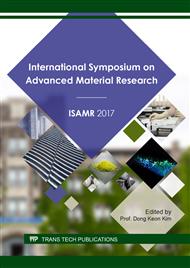p.163
p.168
p.173
p.183
p.188
p.194
p.200
p.206
p.211
Study on Fabrication and Bonding Interface of Explosive Welded Steel/Aluminum/Steel Composite Plate
Abstract:
In order to study the explosive welding experimental fabrication technology of multi-layer dissimilar metal plates and the quality of bonding interface, three-layer steel/aluminum/steel composite plates with different thickness distributions were fabricated using the method of explosive welding when their total thicknesses remained same (total 5 mm). Then the stereomicroscope was adopted to investigate the shape of bonding interface and the formed mechanism was also analyzed. In addition, the micro-hardness (Vickers hardness, Hv) distribution of the composite plate in the thickness direction was studied by a low load Vickers hardness tester. The results show that the method of explosive welding can be used to fabricate three-layer steel/aluminum/steel dissimilar metal plates successfully. Meanwhile, wave bonding interface was formed between steel fly plate and aluminum middle plate, straight bonding interface was formed between aluminum middle plate and steel base plate. The maximum Hv value of welded plate appears at the bonding interface with high bonding strength. The bonding strength of both two kinds of welded interface was considered sufficient, which offers experimental support for the explosive welding of multi-layer plates.
Info:
Periodical:
Pages:
188-193
Citation:
Online since:
August 2017
Authors:
Price:
Сopyright:
© 2017 Trans Tech Publications Ltd. All Rights Reserved
Share:
Citation:


